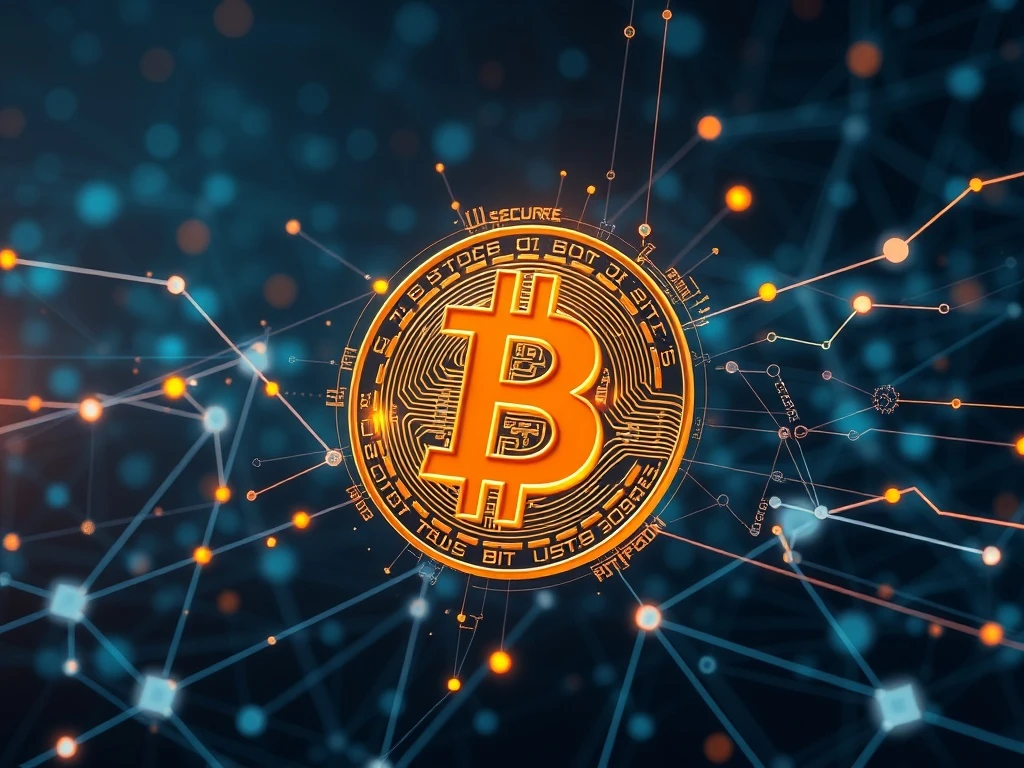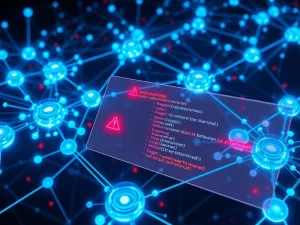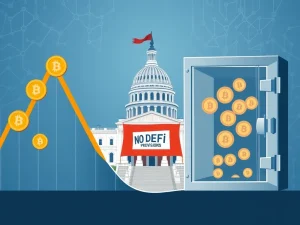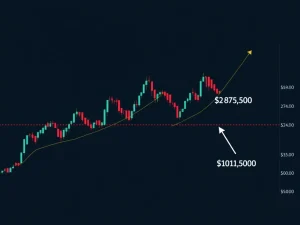Bitcoin DeFi Breakthrough: BOB Integrates ZK Fraud Proofs for Unrivaled Security & 2025 Compliance

The world of cryptocurrency is buzzing with a significant development that could redefine the future of decentralized finance on the Bitcoin network. In a groundbreaking move, Build on Bitcoin (BOB) has integrated zero-knowledge (ZK) fraud proofs into its layer-2 scaling solution. This advancement is not just a technical upgrade; it’s a strategic leap forward that positions Bitcoin to expand its decentralized finance (DeFi) capabilities dramatically, all while aligning with the increasingly stringent regulatory frameworks anticipated for layer-2 solutions by 2025. This innovation promises to unlock unprecedented security and efficiency for Bitcoin DeFi, setting a new standard for trustless applications on the world’s most secure blockchain.
What Are ZK Fraud Proofs and Why Do They Matter for Bitcoin DeFi?
At the heart of BOB’s latest upgrade lies the power of zero-knowledge (ZK) fraud proofs. But what exactly are these cryptographic marvels, and why are they so crucial for the evolution of Bitcoin DeFi? Simply put, ZK proofs allow one party to prove to another that a statement is true, without revealing any information beyond the validity of the statement itself. Imagine verifying a transaction’s legitimacy without exposing any of the sensitive data involved. That’s the magic of ZK proofs.
For Bitcoin, a network known for its robust security but limited smart contract capabilities, ZK fraud proofs offer a transformative solution:
- Enhanced Security: Traditional fraud verification can be slow and resource-intensive. ZK proofs enable transaction disputes to be resolved in minutes, using cryptographic verification that is inherently more secure and less reliant on external trust.
- Scalability for DeFi: By verifying transactions off-chain and then providing a concise ZK proof on-chain, BOB significantly reduces the data burden on the Bitcoin mainnet. This allows for more complex and high-volume DeFi operations, mimicking capabilities seen on networks like Ethereum, but with Bitcoin’s foundational security.
- Privacy-Preserving: Unlike methods that require full transparency, ZK proofs confirm validity without exposing sensitive transaction details, aligning with a growing demand for privacy in blockchain development.
BOB leverages BitVM technology to ensure that validity proofs generated on its chain can be verified directly on Bitcoin. This creates a robust foundation for bridges secured by Bitcoin’s native consensus mechanism, fostering a truly decentralized and trustless environment for Bitcoin DeFi.
Build on Bitcoin (BOB): A Strategic Move Towards Layer 2 Scaling
The recent ‘Kailua upgrade’ is a testament to BOB’s commitment to advancing Layer 2 scaling for Bitcoin. This strategic integration of ZK fraud proofs has propelled BOB to Stage 0 on L2Beat rankings, a key benchmark for evaluating layer-2 protocols based on their security and decentralization metrics. While 24 other protocols currently reside at this stage, BOB’s progress is poised to accelerate toward Stages 1 and 2, where only two protocols currently exist.
Co-founder Alexei Zamyatin highlighted that BOB’s system design eliminates reliance on intermediaries, which not only accelerates settlement times but also addresses a significant limitation of Bitcoin’s current smart contract infrastructure. This proactive approach by Build on Bitcoin is crucial, especially as the blockchain industry matures and demands higher standards for decentralized applications.
The table below illustrates a simplified comparison between traditional fraud verification and ZK fraud proofs:
| Feature | Traditional Fraud Verification | ZK Fraud Proofs (BOB) |
|---|---|---|
| Dispute Resolution Time | Slower, relies on transparent validation | Minutes, cryptographic verification |
| Data Exposure | Full transparency often required | Minimal, sensitive data remains private |
| Reliance on Intermediaries | Can be higher | Eliminated, trust through cryptography |
| Scalability Potential | Limited for complex DeFi | High, enables complex DeFi operations |
| Integration with Bitcoin Mainnet | Less direct verification | Direct verification via BitVM |
Navigating the Future: Crypto Regulations and Bitcoin’s Evolution
The timing of BOB’s ZK implementation is no coincidence. It aligns perfectly with L2Beat’s announcement of stricter 2025 requirements for layer-2 solutions, which will mandate robust proof systems for rollups by mid-2025. Projects that fail to implement compliant verification mechanisms risk reclassification to a new ‘Others’ category, underscoring the critical importance of BOB’s proactive stance on crypto regulations.
This push for regulatory alignment is a broader trend in the blockchain space, driven by growing institutional interest. Analysts observe that ZK proofs, already pivotal in privacy-focused blockchains like Zcash, offer a scalable and compliant solution for Bitcoin DeFi. The total value locked (TVL) in Bitcoin layer-2 protocols like Babylon and EigenLayer already exceeds $20 billion combined, signaling robust institutional confidence in this evolving ecosystem.
What Does This Mean for Bitcoin’s Ecosystem?
The integration of ZK fraud proofs reflects a significant shift towards privacy-preserving solutions in blockchain development. This approach directly addresses the demand for scalable DeFi infrastructure on Bitcoin, where users seek to replicate Ethereum’s extensive capabilities without compromising Bitcoin’s unparalleled security guarantees.
Industry experts widely predict that 2025 will mark a turning point for Bitcoin-native DeFi. This will be driven by a powerful convergence of factors:
- Increased institutional adoption
- Greater regulatory clarity
- Technical advancements like ZK systems
This confluence is expected to fuel substantial market expansion, solidifying Bitcoin’s role not just as a store of value, but as a vibrant hub for decentralized applications.
Challenges and the Path Forward for BOB
While BOB’s progress is impressive, the success of the Kailua upgrade ultimately hinges on widespread adoption and practical implementation. The project faces the inherent challenges of any new technology seeking to gain traction in a competitive landscape. However, BOB’s collaboration with experienced contributors like Alexei Zamyatin adds significant credibility to its technical vision and execution capabilities.
The project’s strong emphasis on decentralization and interoperability positions it well to compete with established layer-2 solutions across other blockchains. By offering a truly trustless environment that fully leverages Bitcoin’s existing security guarantees, BOB aims to carve out a significant niche in the burgeoning Bitcoin DeFi space.
A New Era for Bitcoin DeFi
Build on Bitcoin’s integration of ZK fraud proofs marks a pivotal moment for the Bitcoin ecosystem. By enabling dispute resolution through cryptographic proofs, the protocol significantly reduces friction for users while meticulously maintaining Bitcoin’s core security model. This development is more than just a technical update; it’s a clear signal that Bitcoin is evolving, ready to support sophisticated, trustless DeFi applications that were once thought exclusive to other chains. As 2025 approaches and regulatory demands sharpen, BOB’s proactive steps ensure that Bitcoin remains at the forefront of innovation, solidifying its position as the bedrock of the decentralized future.
Frequently Asked Questions (FAQs)
Q1: What are ZK fraud proofs and how do they benefit Bitcoin?
ZK fraud proofs are cryptographic techniques that allow one party to prove the validity of a transaction or statement without revealing any underlying data. For Bitcoin, this means faster dispute resolution, enhanced security, and greater scalability for DeFi applications, all while maintaining privacy.
Q2: What is Build on Bitcoin (BOB) and what is its goal?
Build on Bitcoin (BOB) is a layer-2 scaling solution designed to expand Bitcoin’s decentralized finance (DeFi) capabilities. Its goal is to enable complex DeFi operations on Bitcoin by leveraging technologies like ZK fraud proofs and BitVM, ensuring security and decentralization.
Q3: How does BOB’s Kailua upgrade align with upcoming crypto regulations?
The Kailua upgrade integrates ZK fraud proofs, which align with stricter 2025 requirements for layer-2 solutions announced by L2Beat. These regulations will mandate robust proof systems for rollups, making BOB’s proactive implementation crucial for regulatory compliance and avoiding reclassification.
Q4: What is the significance of BOB reaching Stage 0 on L2Beat rankings?
Reaching Stage 0 on L2Beat rankings signifies that BOB has implemented foundational security and decentralization metrics for a layer-2 protocol. It marks a crucial step in its development, positioning it to accelerate towards higher stages, which indicate greater maturity and trustlessness.
Q5: How will ZK fraud proofs impact the future of Bitcoin DeFi?
ZK fraud proofs are expected to revolutionize Bitcoin DeFi by enabling more scalable, private, and secure transactions. They will reduce reliance on intermediaries, accelerate settlement times, and attract more institutional interest, driving significant market expansion for Bitcoin-native DeFi applications, especially as regulatory clarity increases.










